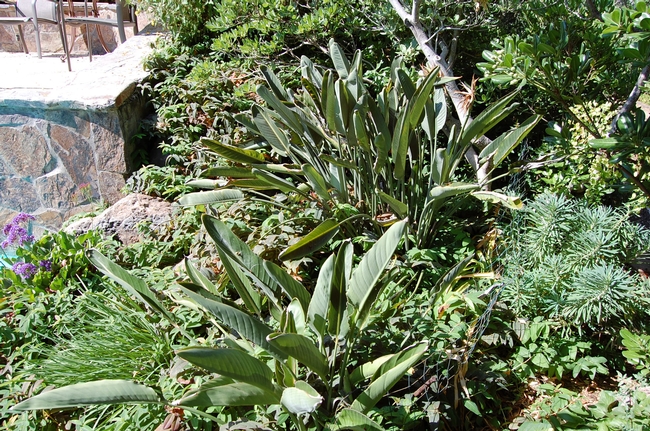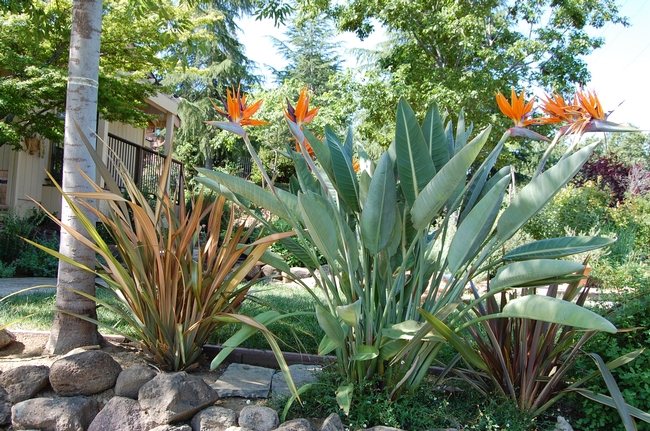Every yard has its microclimates, pockets of sunlight or shade, dry or wet soil, wind exposure or calm. Learning the microclimates of your yard takes time and watchfulness, and maybe the guidance of certain plants.
Take the bird of paradise (Strelitzia reginae), for instance. We have several of the evergreen perennials planted hither and yon in our back yard. Some were here and already established when we moved in back in 2002. Some I have added over the years. And, quite honestly, some are thriving while others are languishing.
It’s a matter of microclimates, if you ask me. And the ever-changing nature of said microclimates, as the shrubs and trees within grow taller, throwing more shade and taking up more of the irrigation.
For instance, some of our long-established birds of paradise are located in a small “glen” of hypericum, pittosporum and rather aggressive Euphorbia. This spot has a protected eastern exposure, is watered regularly and gets a healthy sprinkling of fertilizer twice a year. Over the years, the birds of paradise have grown larger, but they flower rather weakly. Quite possibly the plants need division; I think the nearby pittosporums sop up all the irrigation and block the spring sun required for flowering.
Just 20 feet away stands another bird of paradise. It is a sight for sore eyes: Three-plus feet tall, healthy gray-green leaves, and a profusion of stunning orange and purple flowers. This plant sits in a sunny spot with a western exposure, next to our tiny back lawn. Its neighbors are New Zealand flax, a Chinese hackberry and a sprinkling of Santa Barbara daisies (Erigeron karvinskianus) at its feet. Admittedly, this plant is younger than the others, but it stands in full afternoon sun and has survived several frosts over the years.
Go figure. Maybe the birds of paradise are telling me it’s time to rearrange a few microclimates.
Attached Images:

